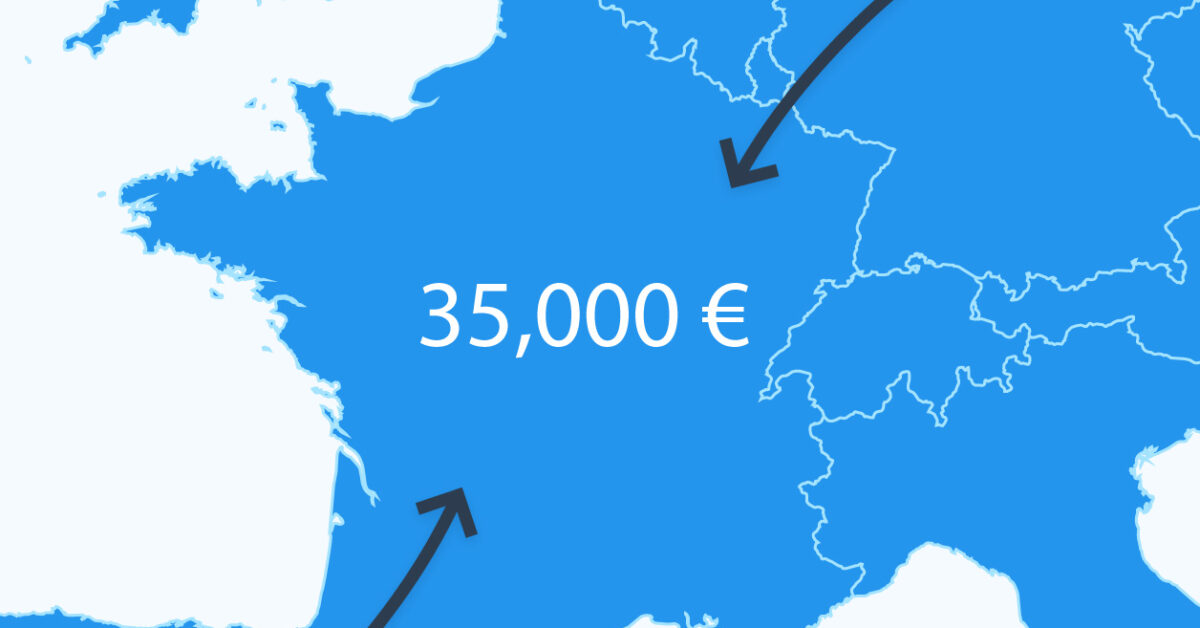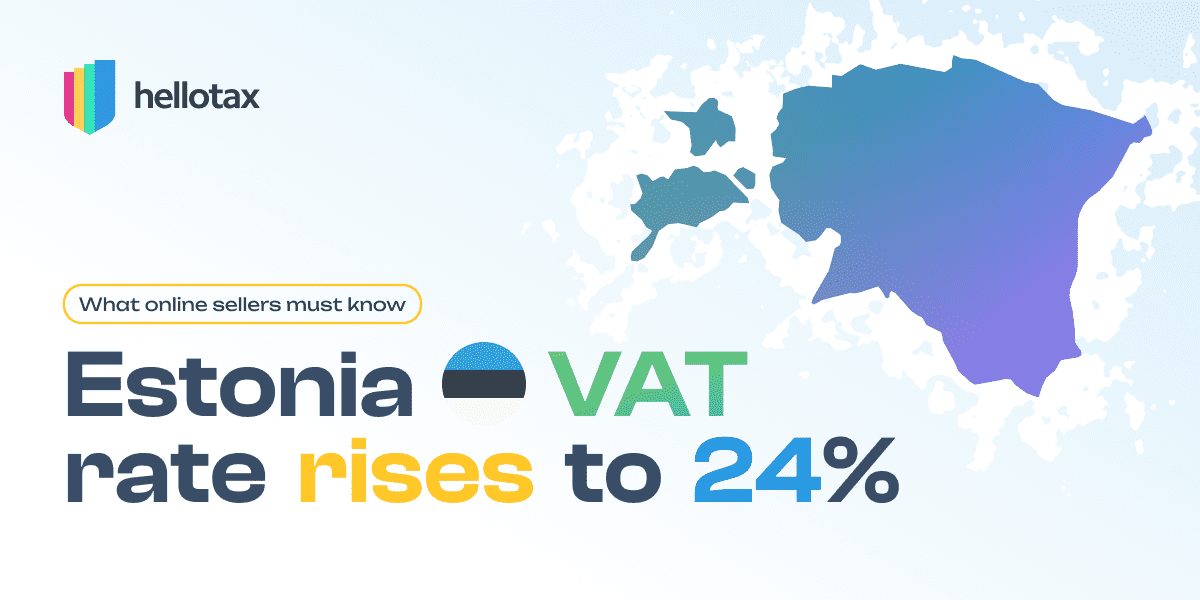Expanding abroad allows retailers to access new markets and significantly increase sales. With a population of nearly 50 million, Spain is a lucrative market with strong purchasing power. If your sales to Spain temporarily exceed the delivery threshold or you store goods there, you must register for VAT. Here’s what you need to know about the VAT Number in Spain.
Antonia Klatt
Last Updated on 1 July 2025
Spanish VAT ID Number: Format and Details
Format of the Spanish VAT Number:
The Spanish VAT number, known as “Número de Identificación Fiscal” (NIF), is essential for European trade. Previously known as “Código de Identificación Fiscal,” the NIF consists of eleven characters: the country code “ES,” followed by a letter, seven digits, and another letter (format: ESX1234567X) for foreign companies. Domestic companies replace the first letter after the country code with a digit (format: ES12345678X).
- Name: Número de Identificación Fiscal
- Country Code: ES
- Format: ES + 9 characters (first and last can be letters)
- Example: ESX1234567X
When to Register for a VAT Number in Spain
Once you reach the annual turnover threshold for distance selling, you are required to register for VAT. Since July 2021, the previous country-specific VAT thresholds have been replaced by a unified EU-wide threshold of EUR 10,000. Companies exceeding this threshold with sales to other EU countries must register for VAT in all relevant countries. Alternatively, the One-Stop-Shop (OSS) allows you to handle all distance sales in a single EU country.
You can find more information in the chapters below or schedule a consultation with our VAT specialists. We will explain when your business needs to register and how our hellotax software can automate your VAT compliance across the EU. Contact us today!
Note: As of July 1, 2021, the EU-wide delivery threshold of EUR 10,000 replaced the previous threshold of EUR 35,000. Companies reaching this threshold must register for VAT in every EU country they sell to or use the OSS system to simplify VAT filings in one country. The natural alternative to registering in all countries is the One-Stop-Shop (OSS), which allows you to file all distant sales in the EU in one single country (your EU registration country or another one of your choice).

Book a free consultation
Our VAT experts are happy to help you. Book a free consultation today!
For any query, do not hesitate to ask (in Spanish or English) our Free Online VAT TAX Consultant.
VAT Rates in Spain
- Standard VAT rate: 21%
- Reduced VAT rates: 10% and 4%
Please read this article for detailed information on VAT rates across the EU member states.
Storage in Spain
Storing goods in Spain requires VAT registration. Shipments to Spain by non-Spanish traders are considered intra-community and not taxable but must be documented with pro-forma invoices. A Spanish VAT number is mandatory for intermediate storage.
How to Get a VAT Number in Spain
If you reach or exceed the delivery threshold or temporarily store goods in Spain, you must obtain a Spanish VAT ID. Apply promptly to avoid interruptions in your trade. To get a VAT ID, register with your local branch of the Agencia Estatal de Administración Tributaria (AEAT). A local representative must handle communications with the Spanish tax authorities, and the AEAT branch responsible for your registration depends on your representative’s location.
If you want to automate your VAT in Spain and if you want us to take care of your VAT registrations, returns, correspondence with the authorities, and much more, book a free consultation with us!
Documents Required
Gather these documents early to streamline your VAT ID application process:
- VAT certificates from other EU countries (if available)
- A declaration stating your company does not have a permanent establishment in Spain
- Notarized Power of Attorney for your local agent or representative in Spain
- Articles of Association and Memorandum
- Extract from your national trade register
If you want to get more information on the duration of the registration process, please read this article.
How long does it take to get a Spanish VAT number?
Once your documents are submitted, it generally takes 4 to 6 weeks to receive your Spanish VAT number, depending on how quickly the local AEAT office processes your application. Delays can occur if additional documents or clarifications are requested, so it’s best to prepare all paperwork carefully in advance.
How often and when do I have to file VAT returns in Spain?
When and how often companies in Spain have to file VAT returns depends on the amount of annual sales. In practice, however, the local tax office will inform you separately.
- Every month: If you have generated more than EUR 6,000,000 in sales in the past year.
- Every quarter: If you have generated less than EUR 6,000,000 in sales in the past year.
- Annual: All VAT-registered companies must also file annual VAT returns.
If you do not have figures from the previous year, e.g., because you have a new company, you must estimate your sales. In any case, the tax office will determine when and how often you have to submit your VAT returns.
You must file your VAT returns by the 20th of the month following your accounting period. Annual VAT returns must be filed by January 30 of the following year.

Book a free consultation
Our VAT experts are happy to help you. Book a free consultation today!
Find VAT number in Spain
The European Commission offers a specially developed tool called VIES, which can be used to check companies’ VAT numbers. This is especially useful if you are working with a new company and want to ensure it is legally registered and reputable. Because an incorrect VAT number of other companies can also lead to audits and problems with your company. To check the number, simply visit the European Commission website and enter the VAT number there in the VIES VAT number validation. If the number is present and correct, it will be displayed by the tool. However, if the number is displayed as not present or incorrect, this can have several reasons:
- The VAT number was not activated for transactions within the EU.
- The registration of the VAT number is not yet completed.
- The VAT number does not exist.
If you search for your own number and encounter an error message, you can check with your local tax office to see what the problem is. Sometimes it simply hasn’t been activated yet, for example.

Register for VAT in Spain

Submit VAT Return in Spain
Summary
If your sales to Spain exceed the delivery threshold of 10,000 EUR or if you store your goods in Spain, you need a Spanish VAT ID. You can get this with the help of a local representative who will apply for it for you. Take care of the representative and the application in time, so that you receive your Spanish VAT number in time.
FAQs
How do I get a VAT ID Number in Spain?
To apply for a Spanish VAT number, you first need a local representative who will communicate with the Spanish tax office on your behalf. This representative must then apply to the local branch responsible for him at the AEAT for you.
When do I need to register for VAT ID Number in Spain?
You need a VAT ID in Spain if your turnover with sales to Spanish citizens exceeds the annual delivery threshold of 10,000 EUR or if you temporarily store goods in Spain. Since you need a VAT ID as soon as you reach the delivery threshold or start storage, you should plan ahead and apply for the VAT ID early.
What does a VAT ID Number in Spain look like?
The VAT number in Spain consists of the country code (ES) followed by 9 characters, e.g. ESX1234567X.
Any other questions ?
We have provided all the main content and legislation for VAT until 2024 to a chatbot of Artificial Intelligence that can assist you with any question online without any cost, do not hesitate to ask (in spanish or english) our Free Online EU TAX Consultant





